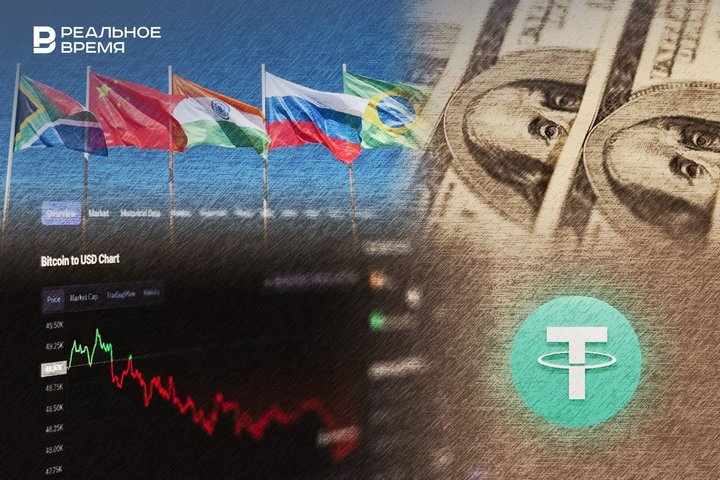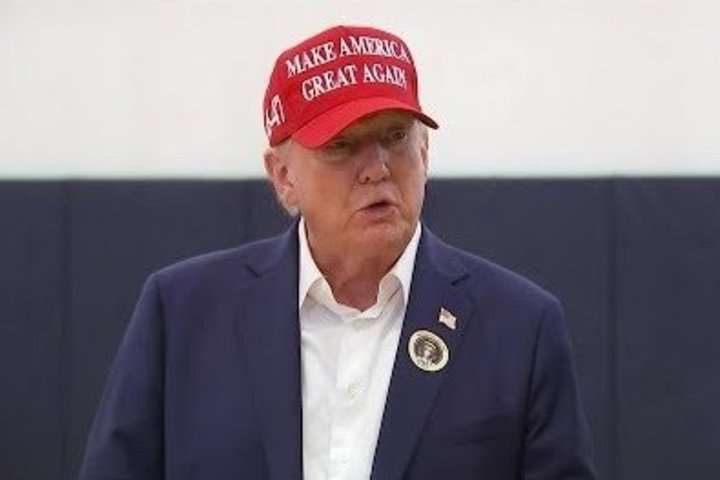GENIUS Act: how the US bringing cryptocurrency ‘digital dollars’ under control

A historic event capable of reshaping the global financial landscape took place within the walls of the US Senate in June this year. Lawmakers passed the GENIUS Act (Guiding and Establishing National Innovation for U.S. Stablecoins Act) — the first federal law in US history establishing comprehensive regulations for stablecoins, cryptocurrencies pegged to the dollar. The adoption of the bill, with rare bipartisan support in today’s Washington (68 votes in favour against 30), marks a turning point not only for the crypto industry but also for the global monetary system. Why this law is so important, what hidden pitfalls it contains, and what consequences await Russia and the BRICS countries — digital economist Ravil Akhtyamov explains in an exclusive column for Realnoe Vremya.
US authorities aim to tame cryptocurrency unicorns
At the heart of the GENIUS Act lies the principle of maximum transparency and investor protection. The law introduces a mandatory 100% backing of all issued stablecoins with highly liquid assets. This means that for every virtual coin denominated in US dollars, the issuer is required to hold an actual dollar in reserve or its equivalent in short-term Treasury bills (T-bills). For example, if a company issues tokens worth $1 billion, its reserve accounts must contain exactly $1 billion in cash or government bonds. The composition of these reserves is subject to mandatory monthly disclosure — a measure aimed at preventing scenarios like the collapse of TerraUSD in 2022.
The protection of stablecoin holders is another cornerstone of the legislation. In the event of the issuer’s bankruptcy, the claims of token holders take precedence over those of other creditors. For major players with a market capitalization exceeding $50 billion, the law imposes a requirement to undergo annual independent audits in accordance with strict federal standards. This is a direct response to scandals surrounding the lack of transparency of the largest stablecoin, Tether (USDT).

Combating financial crime and ensuring national security form the third key pillar of the GENIUS Act. All issuers wishing to operate in the US market are required to implement full-scale KYC (Know Your Customer) and AML (Anti-Money Laundering) systems in line with banking regulations. They must conduct customer due diligence, monitor suspicious transactions, and comply with all sanctions regimes. Technically, issuers are obligated to ensure the ability to instantly freeze or “burn” (destroy) tokens at the request of regulators or law enforcement agencies in order to halt illegal activity.
The law also sets clear restrictions on the circle of entities allowed to issue stablecoins. Large technology companies (Big Tech), such as Meta* (Facebook**), Apple, or Amazon, fall under a direct ban. The motivation is to prevent the concentration of immense financial power in the hands of corporations that already wield enormous influence over the digital sphere and user data. Foreign companies will be permitted to issue stablecoins for the American market only after receiving special approval from the Federal Reserve System (FRS) and on the condition of full compliance with US standards. Particularly noteworthy is the amendment prohibiting current high-ranking government officials, including members of Congress and their immediate relatives, from being beneficiaries or executives of stablecoin-issuing companies. This provision was introduced in response to high-profile conflicts of interest, which will be discussed below.
Trump, $TRUMP Memecoin, and millions in lobbying
The adoption of the GENIUS Act cannot be viewed outside the context of the unprecedented lobbying pressure from the cryptocurrency industry. According to open sources, during the 2024 election cycle alone, crypto companies and affiliated groups spent more than $119 million in support of “friendly” Congressional candidates. The industry actively promoted the narrative of the bipartisan nature of crypto innovation, seeking backing from both major parties.
However, a serious conflict of interest looms over the law due to the personal involvement of US President Donald Trump. It is known that Trump holds a significant stake in the company World Liberty Financial, which has already launched the USD1 stablecoin. Moreover, since the beginning of 2025, the president has been actively promoting the $TRUMP memecoin, created at his initiative, whose market capitalisation at its peak reached $645 million. Although the amendment concerning government officials partially addresses the issue, it does not affect the president’s personal assets, which are formally held in a blind trust managed by his children.

The Democratic opposition voiced strong substantive criticism of the bill. The main concern is the insufficient protection against risks associated with the activities of foreign stablecoin issuers, who could potentially use such instruments to circumvent sanctions or finance undesirable activities. Another serious argument is the potential destabilisation of the US government debt market. The mass purchase of short-term Treasury bills (T-bills) by stablecoin companies to back their reserves could make this key market more volatile and more sensitive to sudden large-scale redemptions from stablecoins, which could trigger a rise in bond yields and increase the cost of servicing the national debt for all taxpayers.
Global consequences: Tether in the crosshairs, dollar strengthens
Experts compare the GENIUS Act to the 2000 Commodity Futures Modernisation Act, which loosened oversight of derivatives ahead of the 2008 crisis. It is a collection of half-measures that will create the regulatory appearance of legitimacy but will not eliminate the risks. The main threat is a potential chain reaction in the event of a stablecoin collapse.
A drop in value below $1 has already occurred (USDC in March 2023 — down to $0.87, Tether in May 2022 — down to $0.95). In the event of a mass outflow, reserves (Treasury bonds) will be sold off, triggering a liquidity crisis. Banks issuing stablecoins (Wells Fargo, Bank of America are in negotiations) would come under pressure.
The consequences of the GENIUS Act will extend far beyond the United States, hitting key players and reshaping global financial flows.
The most vulnerable is Tether (USDT) — the undisputed market leader with a capitalisation exceeding $110 billion. The company, whose headquarters are located outside the US (mainly in Hong Kong and other jurisdictions), will face a dilemma. To serve American clients (legal entities, exchanges, institutional investors), it will either have to create a US-based subsidiary fully compliant with the GENIUS Act or convince the Federal Reserve of the adequacy of its standards. This will require unprecedented transparency: detailed monthly reporting of reserves according to US standards and undergoing independent audits. If Tether cannot or does not want to comply, it risks effectively being blocked from access to the vast American market and partners, which could trigger a massive capital outflow from USDT.

A broader effect is the further strengthening of the global hegemony of the US dollar. The GENIUS Act de facto establishes the global standard for stablecoin regulation. Countries and companies around the world seeking to integrate into global financial flows will be forced to align with these rules or risk isolation. This creates a powerful barrier for alternative projects, such as BRICS countries’ payment systems, which are being developed partly as tools for de-dollarisation. Corporations, especially those operating in international markets, will be compelled to predominantly use stablecoins compatible with American regulations. Furthermore, US sanctions control will gain a new powerful tool: the ability to demand the freezing of tokens involved in “prohibited” transactions, wherever in the world they occur, if they concern American issuers or counterparties.
Risks for Russia: vulnerability of USDT and the urgency of countermeasures
For Russia, the consequences of the GENIUS Act may be tangible and negative in the short term. The main threat is linked to the widespread use of the USDT (Tether) stablecoin as a tool for international settlements, circumventing sanctions, and peer-to-peer transactions within the country.
The new law increases the risk of blocking USDT inflow channels. American regulators will gain expanded powers to pressure crypto exchanges and P2P platforms to cease servicing users from sanctioned jurisdictions, including Russia. KYC procedures on global exchanges will be tightened. Major platforms (Binance, Bybit, etc.), aiming to maintain access to the American market or partners, will be forced to implement draconian identification measures for all users. This will sharply increase the risk of account blocking for Russian clients, even those using VPNs.
It will create a threat of “tokenised sanctions”. The technical ability to instantly freeze tokens at the request of US regulators could be used against specific wallets or transactions associated with the Russian economy or individuals.
These challenges make the accelerated development of national alternatives not just desirable, but critically necessary. The key areas of response should be:
- Accelerated implementation of the digital ruble as a reliable, sanctions-resistant foundation for domestic and — potentially — cross-border settlements within the EAEU and with friendly countries.
- Creation and support of legal national crypto exchange platforms and infrastructure operating within Russia’s legal framework and integrated with the banking system, to reduce dependence on vulnerable international services.
- Development and adoption of comprehensive legislation regulating the issuance and circulation of crypto assets in Russia, with an emphasis on investor protection and prevention of illicit use, but without excessive restrictions that stifle innovation.
- Exploration and development, together with BRICS, SCO, and EAEU partners, of mechanisms for sanctions-resistant cryptocurrency payment corridors, possibly based on mutual recognition of national stablecoins or central bank digital currencies.
BRICS response: a dollar-free trading platform
The threat to dollar hegemony, intensified by the GENIUS Act, will force BRICS countries to accelerate the creation of a sovereign trading platform. Its principles represent a break with the Western system. Firstly, full currency sovereignty: a ban on pricing not only in US dollars, euros, pounds sterling, or yen. All contracts will be denominated exclusively in national currencies (rubles, yuan, rupees, reals, rands) and a new “BRICS settlement unit” — a digital token backed by a commodity pool (gold, oil, grain, rare earth metals). Secondly, technological independence on the blockchain: transactions will be recorded in a decentralised ledger with data storage nodes in Moscow, Shanghai, Mumbai, São Paulo, and Pretoria, eliminating external control or blocking. To prevent rule circumvention, AI monitoring will be implemented, instantly blocking attempts to indicate a “USD equivalent” or hidden conversion.
The practical operation of such a platform will be clearly demonstrated in the energy sector: a Russian oil exporter lists a lot in rubles and BRICS units. The Indian buyer sees the price automatically converted into rupees and the same BRICS units. No dollar as an intermediary currency — technically excluded by the system’s architecture. Settlements are made instantly through integrated central bank digital currencies (digital ruble, digital yuan).

BRICS countries may create a stable digital currency for mutual settlements. Its foundation will be the union’s banking system: special Operator Banks will issue and redeem tokens, while Custodian Banks will securely hold reserves. The backing will consist of a basket of BRICS currencies (ruble, yuan, rupee, real, rand + currencies of new members), held as deposits in these banks. This will reduce dependence on the dollar and SWIFT, lower the cost of cross-border payments among member countries, and strengthen the role of national currencies. The success of the project depends on agreeing the weights of currencies in the basket, unified regulatory standards, and the choice of the technological platform.
If by 2026, 15% of BRICS trade turnover passes through the platform, it will collapse demand for USDT in Eurasia, make the BRICS settlement unit (stablecoin) an alternative reserve asset, and force the EU to discuss joining the system on terms of sanctions relief.
What’s next? The path to Trump’s signature and market scenarios
Despite Senate approval, the GENIUS Act is not yet law. Its further fate depends on several steps.
- Coordination with the House of Representatives. The lower chamber of Congress, dominated by Republicans, has already passed its own version of stablecoin regulation — the STABLE Act. Now a complex process of reconciling a unified text in a conference committee lies ahead. The main points of tension:
- Federal control and states’ rights. The Senate version strengthens federal regulators (the Fed, Treasury), while many House Republicans advocate for a greater role for states in oversight.
- The White House strategy. President Trump publicly supports the rapid legalisation of stablecoins. His digital assets advisor, Beau Hines, has stated the administration’s desire to sign the law by August 2025. This would give Trump a powerful card ahead of the 2026 US Senate elections — the opportunity to position himself as the president who legalised cryptocurrencies and boosted innovation. The potential increase in the value of World Liberty Financial’s assets, linked to Trump, should also not be underestimated.
- Scenarios for the Crypto Market. The outcome of the legislative saga will determine investor sentiment.
- Optimistic scenario (rapid adoption of clear rules). Growth in institutional investor confidence, influx of major capital, explosive growth in the capitalisation of regulated stablecoins (forecasts — up to $5 trillion by 2030) and the entire crypto industry. Strengthening the positions of leaders compliant with standards (USDC by Circle).
- Pessimistic scenario (delays or adoption of the law with “strangling” provisions). Investor flight from “non-compliant” tokens (primarily USDT, but also decentralised DAI), a sharp liquidity drop, a market crash of 20–30%, and a prolonged period of uncertainty. Strengthening the position of offshore, opaque platforms.
Sovereignty in the digital age at stake
The GENIUS Act is not simply “technical rules for cryptocurrencie”. It is a powerful tool of financial geopolitics pursuing several strategic goals of the United States.
Strengthening the global role of the dollar in a rapidly digitalising economy by establishing a global standard for its digital equivalents. Expansion of US jurisdiction and control over cross-border financial flows through crypto assets. The sanctions mechanism gains a new, high-tech dimension. Suppression of alternative financial systems and de-dollarisation projects, such as BRICS initiatives, by creating high barriers to entry and compelling the use of instruments “compatible” with American rules.

For Russia, the situation demands immediate and decisive action. Accelerating the launch of the digital ruble, creating national crypto infrastructure, and establishing sanctions-resistant settlement mechanisms with key partners are not issues of the distant future, but urgent tasks of today. The adoption of the American law is a signal: the era of unregulated “digital dollars” is coming to an end; the time of strict rules and the struggle for financial sovereignty in the digital space is beginning.
Reference
* recognised as extremist; its activities are banned on the territory of the Russian Federation
** A social network banned in Russia, owned by Meta*, which is designated as extremist; its activities are banned on the territory of the Russian Federation
